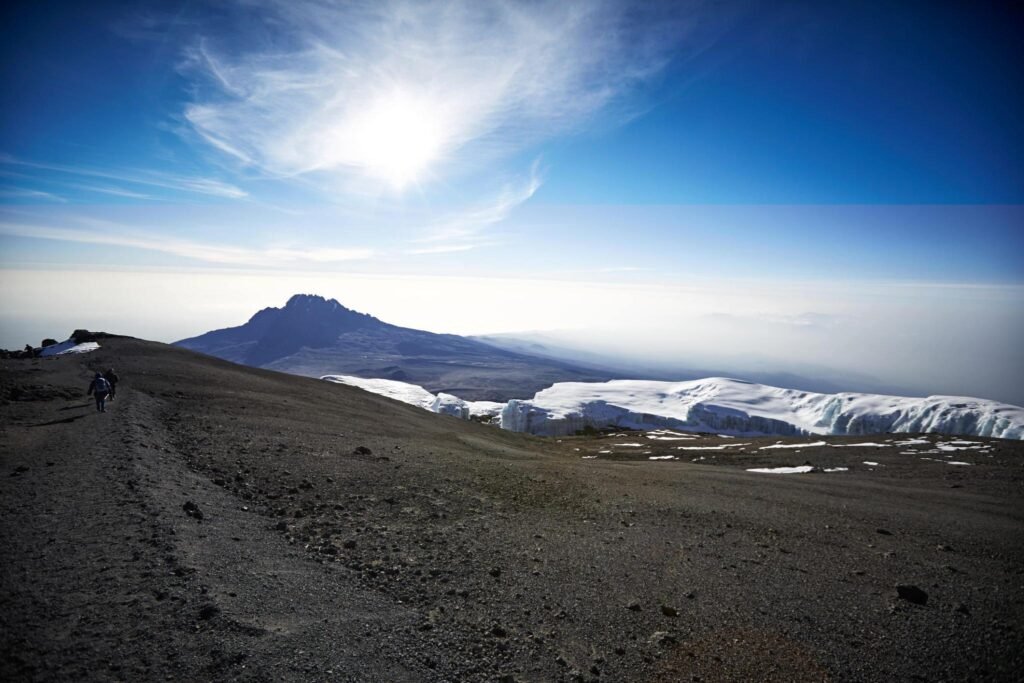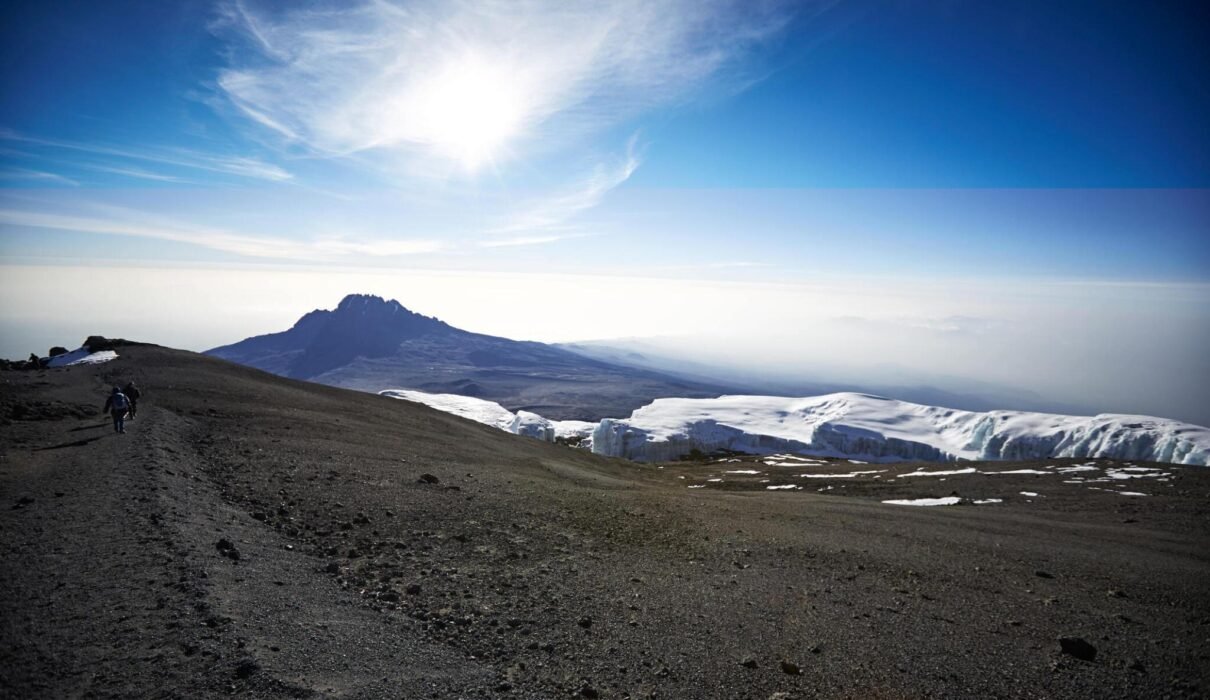Mount Kilimanjaro, the highest peak in Africa, offers an unforgettable adventure for those seeking to reach its summit. While many climbers opt for the dry season, climbing Kilimanjaro in November offers its own unique benefits and challenges. In this guide, we’ll explore everything you need to know about climbing Kilimanjaro in November 2024 and 2025, including weather expectations, the best routes, essential gear, and training tips to ensure a successful summit.
Why Climb Kilimanjaro in November 2024 & 2025?
November is part of the short rainy season in Tanzania, but this doesn’t mean it’s a bad time to climb Kilimanjaro. In fact, climbing in November has several advantages:
1. Fewer Crowds
Many climbers choose to climb Kilimanjaro during the dry season, leading to crowded trails. However, in November, the trails are much quieter, allowing for a more peaceful and intimate climbing experience. If you prefer solitude and a quieter atmosphere, November is an ideal time to climb.
2. Lush, Scenic Landscapes
The short rainy season in November brings life to Kilimanjaro’s lower slopes. The rainforest zone is especially lush and vibrant, making for a more visually stunning trek. The rain also clears the air, offering better views when the clouds part, especially from higher altitudes.
3. Lower Costs
Since November is considered part of the “off-season,” many tour operators offer more affordable climbing packages. If you’re looking to experience Kilimanjaro without the high-season costs, November is a great time to take advantage of discounted rates.
Explore Kilimanjaro Climbing Packages for November

Kilimanjaro Weather in November 2024 & 2025
The weather on Kilimanjaro varies greatly depending on altitude. Here’s what you can expect in November 2024 and 2025 at different elevations:
1. Rainforest Zone (Up to 3,000 Meters)
At the lower altitudes, especially in the rainforest zone, temperatures range between 15°C and 25°C (59°F to 77°F). Rain is common in November, but it tends to come in short, heavy showers, mostly in the afternoon. While the trails may be muddy, the lush greenery makes up for it with breathtaking scenery.
2. Moorland and Alpine Zones (3,000 to 4,500 Meters)
As you ascend, rainfall decreases, and temperatures drop to between 0°C and 15°C (32°F to 59°F). The weather can be unpredictable, with sudden changes from rain to clear skies. The dry air and expansive landscapes in these zones offer stunning views of Kilimanjaro’s unique terrain.
3. Summit Zone (Above 4,500 Meters)
Near the summit, temperatures drop further, with nighttime temperatures reaching as low as -15°C (5°F). The air is dry, and although the summit may experience snow, November’s rain tends to be more frequent at lower elevations. Clear skies at dawn offer spectacular views from Uhuru Peak, making the climb worth the effort.
Book Your November Climb with Eddy Tours Safaris
Best Kilimanjaro Routes for November Climbs
Choosing the right route is crucial when climbing Kilimanjaro in November, as the weather can be more unpredictable. Here are the top recommended routes for November:
1. Rongai Route
The Rongai Route approaches Kilimanjaro from the north, near the Kenyan border. This side of the mountain is typically drier than the southern routes, making it a great option for climbing in November. It’s a quieter route, offering solitude and scenic views of both the Kenyan and Tanzanian landscapes.
2. Northern Circuit Route
The Northern Circuit Route is the longest and most scenic route on Kilimanjaro. It offers excellent acclimatization opportunities, making it a great choice for those looking to increase their chances of reaching the summit. The route also avoids the rainier southern slopes, offering a drier and more enjoyable trek.
3. Machame Route
For those seeking a challenge, the Machame Route, also known as the “Whiskey Route,” is one of the most popular paths up Kilimanjaro. While the southern side of the mountain tends to be wetter, the Machame Route provides breathtaking scenery and a diverse range of landscapes. It’s an excellent option for those who don’t mind occasional rain in exchange for stunning views.
Find the Best Kilimanjaro Routes for November
Essential Gear for Climbing Kilimanjaro in November
Packing the right gear is essential for a successful climb in November, as you’ll need to prepare for wet and cold conditions.
1. Waterproof Gear
Given the likelihood of rain in November, waterproof gear is crucial. Bring a high-quality waterproof jacket, rain pants, and a backpack cover. Staying dry is key to staying comfortable during the trek, especially in the rainforest zone.
2. Layered Clothing
Temperatures vary greatly as you ascend Kilimanjaro, so packing layered clothing is important. Start with moisture-wicking base layers, add insulating mid-layers, and finish with a windproof and waterproof outer shell. A warm, insulated jacket is essential for the cold nights near the summit.
3. Sturdy Hiking Boots
A reliable pair of waterproof hiking boots with strong ankle support is essential for navigating Kilimanjaro’s rocky and often slippery terrain. Make sure your boots are broken in before the climb to avoid blisters.
4. Trekking Poles
Trekking poles are recommended for added stability, especially on the wet and muddy trails in the lower zones. They help reduce the strain on your knees during steep descents and provide extra balance on uneven terrain.
Discover More Kilimanjaro Packing Tips
Training Tips for Your Kilimanjaro Climb in November
Physical preparation is key to a successful climb. Here are some training tips to help you get ready for climbing Kilimanjaro in November:
1. Build Cardiovascular Endurance
Kilimanjaro requires long days of trekking, so it’s important to build your cardiovascular endurance. Include activities like running, hiking, swimming, or cycling in your training routine to improve stamina and ensure you can handle the demands of the climb.
2. Strengthen Your Legs and Core
Strength training is crucial for managing Kilimanjaro’s steep ascents and uneven terrain. Focus on exercises that build leg strength, such as squats and lunges, and incorporate core exercises like planks to improve balance and stability.
3. Practice Hiking with a Backpack
Get used to carrying a backpack by incorporating practice hikes into your training routine. Start with shorter hikes and gradually increase the distance while carrying the gear you’ll need during your Kilimanjaro climb.
4. Acclimatization Preparation
If possible, train at higher altitudes before your climb. This will help your body adjust to the lower oxygen levels and reduce the risk of altitude sickness. If you live near mountains, try hiking at altitude to simulate the conditions on Kilimanjaro.
Get More Training Tips for Kilimanjaro
FAQs About Climbing Kilimanjaro in November 2024 & 2025
1. Is November a good time to climb Kilimanjaro?
Yes, November is a good time to climb Kilimanjaro if you prefer fewer crowds and lush, scenic landscapes. While the weather can be rainy at lower altitudes, with proper preparation and waterproof gear, the experience can be incredibly rewarding.
2. What is the weather like on Kilimanjaro in November?
In November, the lower slopes are rainy and humid, while the higher altitudes are cooler and drier. Temperatures range from 15°C to 25°C (59°F to 77°F) at the base and can drop to -15°C (5°F) near the summit. The rain tends to be heaviest in the rainforest zone, but it clears up at higher elevations.
3. Which Kilimanjaro route is best for November?
The Rongai Route and Northern Circuit Route are recommended for November climbs, as they are located on the drier side of the mountain. The Machame Route is also an option, but it may experience more rain.
4. Do I need special gear for climbing Kilimanjaro in November?
Yes, waterproof gear is essential for a November climb. You’ll also need layered clothing to adapt to the varying temperatures and sturdy hiking boots for navigating the wet and slippery trails.
5. How long does it take to climb Kilimanjaro in November?
Most Kilimanjaro climbs take between 6 to 9 days, depending on the route. Longer routes like the Northern Circuit offer better acclimatization and increase your chances of reaching the summit.
6. How should I prepare for altitude on Kilimanjaro?
To prepare for the high altitudes on Kilimanjaro, focus on building endurance and incorporating hikes at altitude into your training routine. Taking it slow during the climb and allowing your body to acclimatize properly will reduce the risk of altitude sickness.
Start Your Kilimanjaro Adventure in November 2024 & 2025!
Climbing Kilimanjaro in November 2024 or 2025 offers a quieter, more intimate experience with breathtaking landscapes and fewer crowds. Whether you’re an experienced trekker or a first-time climber, this is your opportunity to conquer Africa’s tallest mountain.
Book Your Kilimanjaro Climb with Kilimanjaro Climb Specialist
Plan Your Journey with Eddy Tours Safaris

